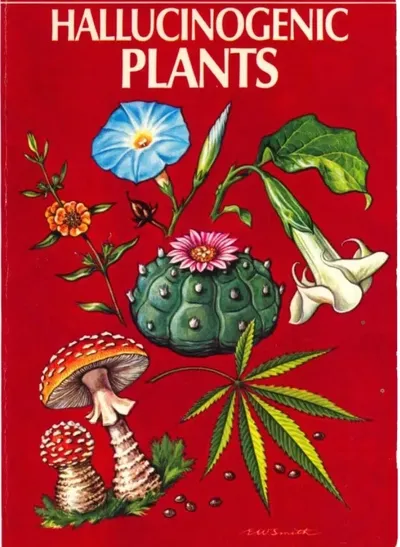
Psilocybin:
Psilocybin works by activating serotoninreceptors, most often in the prefrontal cortex. This part of the brain affects mood, cognition, and perception. Hallucinogens also work in other regions of the brain that regulate arousal and panic responses.
Psilocybin does not always cause active visual or auditory hallucinations. Instead, it distorts how some people that use the drug perceive objects and people already in their environment.
The quantity of the drug a person consumes, their past experiences, and their expectations of how the experience will take shape can all impact the effects of psilocybin.
The hallucinogenic effects of psilocybin usually occur within 30 minutes after a person ingests it and last 4–6 hours. In some individuals, changes in sensory perception and thought patterns can last for several days.
The potency of a magic mushroom depends on:
- species
- origin
- growing conditions
- harvest period
- whether a person eats them fresh or dried
The amount of psilocybin in dried mushrooms is about 10 times higher than that found in their fresh counterparts.
Mescaline:
A psychedelic compound derived from several cacti, including peyote and San Pedro Mescaline is considered a hallucinogen or psychedelic drug, and its effects include: an altered state of consciousness with altered thinking and changes in time and perception, which is often described as happy, positive, enjoyable, and ‘illuminating’. Feeling like you are in a dream-like state. The compound was first identified and named by the German chemist Arthur Heffter in 1897. The Doors of Perception is a first-person account of Aldous Huxley’s first mescaline experience.
MDMA (3,4-methylenedioxymethamphetamine):
A psychoactive compound was first synthesized by Merck in 1912 but never marketed. After the compound was resynthesized by Bay Area chemist Alexander “Sasha” Shulgin in the 1970s, it became a popular adjunct to psychotherapy because its “empathogenic” qualities helped patients form a strong bond of trust with their therapists. In the 1980s, the drug showed up in the rave scene, where it was sold under the name of Ecstasy (or E or later Molly); in 1986, the U.S. government put MDMA on Schedule 1, declaring it a drug of abuse with no accepted medical use. However, recent drug trials sponsored by MAPS have demonstrated MDMA’s value in treating PTSD. MDMA is not considered a “classical psychedelic” because it appears to operate on different brain pathways from LSD or psilocybin.
LSD (lysergic acid diethylamide):
Lysergic acid diethylamide (LSD), also known colloquially as acid, is a potent psychedelic drug. Effects typically include intensified thoughts, emotions, and sensory perception. At sufficiently high dosages LSD manifests primarily mental, visual, as well as auditory, hallucinations. This psychedelic compound was first synthesized in 1938 by Albert Hofmann, a Swiss chemist at Sandoz who was searching for a drug to stimulate circulation. LSD was the twenty-fifth molecule that Hofmann had derived from the alkaloids produced by ergot, a fungus that infects grain. Hofmann shelved the compound when it proved ineffective as a medicine, but five years later a premonition led him to resynthesize it. After accidentally ingesting a small quantity of LSD, he discovered its powerful psychoactive properties. In 1947, Sandoz began marketing LSD as a psychiatric drug under the name Delysid. It was withdrawn from circulation in 1966 after the drug appeared on the black market.
Ayahuasca:
Ayahuasca (pronounced ‘eye-ah-WAH-ska’) is a plant-based psychedelic. Psychedelics affect all the senses, altering a person’s thinking, sense of time and emotions. They can cause a person to hallucinate—seeing or hearing things that do not exist or are distorted.
Ayahuasca is a decoction (concentrated liquid) made by prolonged heating or boiling of the Banisteriopsis caapi vine with the leaves of the Psychotria viridis shrub, although there can be a variety of other plants included in the decoction for different traditional purposes. The active chemical in ayahuasca is DMT (dimethyltryptamine).
It also contains monoamine oxidase inhibitors (MAOIs).
Ayahuasca has been used for centuries by First Nations peoples from contemporary Peru, Brazil, Colombia, and Ecuador for religious ritual and therapeutic purposes.
Ketamine:
Ketamine is a dissociative anesthetic that has some hallucinogenic effects. It distorts perceptions of sight and sound and makes the user feel disconnected and not in control. It is an injectable, short-acting anesthetic for use in humans and animals. It is referred to as a “dissociative anesthetic” because it makes patients feel detached from their pain and environment. Ketamine can induce a state of sedation (feeling calm and relaxed), immobility, relief from pain, and amnesia (no memory of events while under the influence of the drug). It is used for its ability to produce dissociative sensations and hallucinations.

